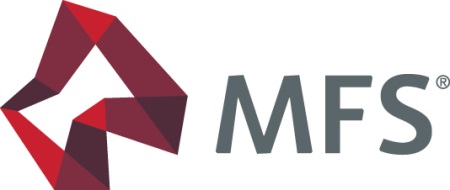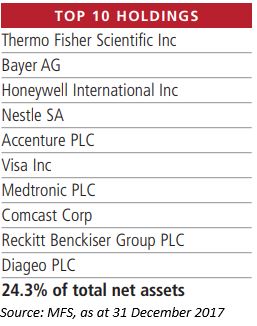2018 March Newsletter
Autumn is here, and not a moment too soon after a prolonged heatwave over summer. The Winter Olympics provided some welcome relief from the heat at home, and even though we failed to score gold at Pyeongchang we came away with two silver medals, one bronze and some promising young athletes to celebrate.
In the US, there was a relief when the US Federal Reserve reported to Congress on February 23 that it was comfortable with the inflation outlook and not inclined to lift rates more than three times this year. Global shares stabilised after their recent volatility.
In Australia, the Reserve Bank has indicated rates are likely to remain on hold for some time to encourage wage growth. Reserve Bank Governor Phillip Lowe told the House of Representatives Standing Committee on Economics he would like to see wage growth of 3.5 percent. Instead, the Wage Price Index rose 2.1 percent in the year to December, just above inflation of 1.9 percent, with public sector wages (up 2.4 percent) growing faster than the private sector (1.9 percent).
On a positive note, corporate profits were solid in the six months to December, with a record 94 per cent of companies reporting a profit, although only 57 per cent lifted profit. Unemployment fell from 5.6 percent to 5.5 percent in January and consumer sentiment continues to recover. The ANZ/Roy Morgan consumer confidence rating rose 2.3 percent in the final week of February to 117.9, well above the historic average. The strengthening US dollar saw the Aussie dollar fall from over US81c in January to around US78.5c by the end of February.
Home & Away with Super

This new measure has been devised to assist first home buyers, many of whom have struggled to save a deposit as rising prices put even entry-level properties out of reach.
At the other end of the scale, the change is envisaged to help older homeowners who frequently find themselves in large houses while trying to survive on a modest super balance or the aged pension.
Here’s how the Federal Government hopes to improve the situation at both ends of the property market.
Buying a home
Under the new First Home Super Saver (FHSS) scheme, individuals can arrange for up to $30,000 to be deducted from their pre-tax income and put in their super account. They can then withdraw 85 percent of that money ($25,500), plus any interest they’ve earned on it, to use for a home deposit. In the case of a couple, both partners can save $30,000, meaning a deposit of $51,000 (i.e. 85 percent of $60,000) plus interest can be accumulated.
So what’s the catch?
It’s complicated.
For starters, individuals can only contribute $15,000 to their FHSS account in any one year. What’s more, the compulsory 9.5 per cent super contributions made by employers can’t be accessed; additional voluntary contributions need to be made. The annual contributions cap of $25,000 cannot be exceeded; this includes all voluntary contributions plus employer’s Super Guarantee contributions.
When the money is withdrawn, it is taxed at the individual’s marginal tax rate minus a 30 percent tax offset. Effectively, that means most people will pay little or no tax although higher-income earners on high marginal rates will still pay some tax.
Selling a home
Under the Downsizer Super Contribution Scheme (DSC), homeowners who are 65 or older can put up to $300,000 of their home sale proceeds into their super provided it’s their place of residence and they’ve owned it for at least 10 years. In the case of a couple, both partners can deposit $300,000 (collectively $600,000) into super.
What’s the catch?
Unless you're a wealthy retiree looking for a tax break there doesn’t appear to be one. For those who already have more than $1.3 million in super, adding a $300,000 downsizer contribution will breach the $1.6 million balance transfer cap which is the maximum balance that can be held in a tax-free super pension account. Given the current generation of Australians have been retiring with average super balances of well under $300,000, that is unlikely to be an issue for most downsizers.
What do you do now?
If you are looking to purchase your first home, you will need to check your super fund allows FHSS contributions and, more importantly, withdrawals. You’ll then need to arrange for your employer to deduct voluntary contributions of up to $15,000 a year. When you want to access your money, you will have to acquire an ‘FHSS determination’ (essentially a balance statement) from the Commissioner of Taxation before requesting your super fund to release the money.
Following approval of this request, your super fund deposits your FHHS money, minus any tax you’ve incurred, into your account. You then have 12 months to sign a contract to buy or build a home.
If you are looking to downsize your home, you will first need to check your super fund accepts downsizer contributions. If it does, you can deposit up to $300,000 within 90 days of receiving the proceeds of the sale. You’ll have to fill in and send your super fund a ‘downsizer contribution form’ before, or when transferring the money into your account.
If you’re hoping to either buy your first home or downsize, call us to discuss how the changes to super can save you money.
Weighing up the value of life insurance
It probably comes as no surprise to anyone that there is a significant underinsurance gap between what we would need to maintain our standard of living should the unthinkable happen, and what we are actually covered for in the way of insurance.
Australia is one of the most underinsured nations in the developed world, ranking 16th for life insurance coverage.i
There are lots of reasons people give for not buying life insurance, but the top of the list is invariably cost. Sounds reasonable enough, especially when households are under pressure from increasing costs of living. But dig a little deeper and it turns out the way we weigh up decisions when outcomes are uncertain is not always in our best interests.
According to something called ‘Prospect Theory’, people fear a certain loss more than they value a larger but uncertain gain. We tend to view money spent on insurance premiums as a loss, unlike money spent on a daily cup of coffee, a pair of shoes or a weekend away, which deliver immediate rewards.
There’s also a disconnect between what we say we value and what we spend our money on.
Thinking about the unthinkable
When asked, most people say the thing they value most is family. Yet when it comes to insurance many of us cover our car and our home but overlook our most important assets - our life, our ability to earn an income and the well-being of the people who depend on us.Thinking about being diagnosed with a terminal disease, suffering a disabling accident or contemplating your own death or that of your partner is uncomfortable. Seeking cover for those possible eventualities is something that is very easy to put off or avoid altogether.
The real value of life insurance is the peace of mind, that if we die or become seriously ill and are unable to work then the right amount of money will go to the right people when they need it most.
Types of life insurance
There are three main types of life insurance. Death cover provides a lump sum if you die or are diagnosed with a terminal illness; total and permanent disability (TPD) pays a lump sum if you are permanently disabled due to an accident or illness and unable to work; and income protection provides a monthly payment if you can’t work due to illness or injury.The amount of life insurance you need depends on your family circumstances, your income and lifestyle. While many working Australians have default cover in their super fund, that’s no cause for complacency. It’s often a basic level of cover, which may need to be topped up outside super.
Take Chris, aged 30. He has a partner, two children and the median level of default life insurance cover in super for someone his age. That is, $211,000 in death cover, $162,500 for TPD and $2,250 a month for income protection. According to a recent report by Rice Warner, the amount someone in Chris’s position needs is closer to $704,000 of death cover, $910,000 of TPD cover and $4,150 a month of income protection.ii
Paying for peace of mind
Paying life insurance premiums won’t provide the instant pleasure hit of an espresso, but most people would be surprised to know that the peace of mind that comes from protecting their family’s financial security costs less than their daily cup of coffee.Rice Warner estimates the cost of death cover and TPD cover for the average working Australian at less than 1 percent of salary, and less than 0.5 percent for white-collar workers.iii Which begs the question, what cost do you put on the wellbeing of the people you love most?
If you would like us to help you work out the appropriate level of life insurance for your family, and the best way to achieve it, give us a call.
i Swiss Re Economic Research & Consulting, 2007
ii Underinsurance in Australia 2017, Rice Warner.
iii How affordable is group insurance in superannuation, Rice Warner, December 2016, http://www.ricewarner.com/rice-warners-affordability-study-how-affordable-is-group-insurance-in-superannuation/
Monthly Fund Update: MFS Global Equity Trust

What does it invest in?
The MFS Global Equity Trust invests a diverse portfolio of quality growth companies using a bottom-up strategy, with sector and country weightings reflecting the team’s favourite stock ideas. It patiently seeks companies that are reasonably priced and can grow sustainably.
Large blue-chip stocks dominate
This is because patience and preference for high-quality companies exhibiting above average and sustainable growth are among MFS Global Equity’s hallmarks. There has been above average exposure to European names which is largely confined to well-known multinational corporations with major global footprints. Global multinationals have also been used to capitalise on the faster pace growth in emerging markets countries, making up for the portfolio’s limited direct stock exposure in these nations.
Top 10 Portfolio Holdings
What is its performance?
MFS Global Equity’s sustainable growth remit has proven especially valuable during market turbulence, while still keeping pace during rising markets. MFS outperformed the index in 2017, courtesy of its stock calls in healthcare, consumer and financials. This followed a year where Global Equity was marginally behind the benchmark, hampered by its lowly exposure to energy and positioning in consumer staples. Notable detractors include pharmaceutical giant Bayer, cosmetics company Coty, and Sky, while Time Warner and St Jude Medical all performed well.
|
As at 28 February 2018 |
1 Month (% pa) |
1 Year (% pa) |
3 Years (% pa) |
10 Years (% pa) |
|
|
MFS Global Equity Trust |
-0.89 |
15.91 |
8.43 |
10.12 |
|
|
Market Index (MSCI World Ex- Australia NR AUD) |
-0.41 |
15.99 |
8.47 |
8.06 |
|
|
Outperformance (%) |
-0.48 |
-0.08 |
-0.04 |
2.06 |
Source: InvestSMART
Potential Benefits to Your Portfolio
MFS should be considered as a core holding in the international portfolio, due to its high level of correlation and low tracking error when compared to its benchmark the MSCI World Ex-Au Index. As mentioned previously, the ability for MFS to have a lower drawdown during market weakness is a key potential benefit of investing in the fund.

Diamond Blue Financial Services has been raising funds for Cerebral Palsy Alliance through 20/twenty Challenge for over 15 years (founded by Ross Ellice-Flint and James Hodgkinson).
Each year we have worked towards achieving our targeted raising ($8,000 per annum) before we embark on the major fundraising event called the 20/Twenty challenge. The Challenge involves teams to complete a 500m swim, 20km walk and a 3km kayak and raise funds. Our dedicated team is up for the challenge again this year and is extremely motivated to help children with Cerebral Palsy.
Cerebral Palsy is the most common physical disability in childhood. The severity of cerebral palsy differs from child to child but almost all children with cerebral palsy need some form of equipment. Sadly some of these children will wait up to 18 months to receive it. The 20/Twenty challenge raises funds to provide specialised equipment in a timely manner for children with C.P. As an example, a powered wheelchair with customised seating can cost in excess of $30,000. Please join us in this amazing adventure and help reduce the physical and mental strain on families and children with cerebral palsy. Your support creates brighter futures for these children and their families.
Any donation would be greatly appreciated and can be made following the link below:
Sponsor us by clicking here
Please note this information is of a general nature only and has been provided without taking account of your objectives, financial situation or needs. Because of this, we recommend you consider, with or without the assistance of a financial advisor, whether the information is appropriate in light of your particular needs and circumstances.
Copyright in the information contained in this site subsists under the Copyright Act 1968 (Cth) and, through international treaties, the laws of many other countries. It is owned by EFDB Pty Ltd unless otherwise stated. All rights reserved. You may download a single copy of this document and, where necessary for its use as a reference, make a single hard copy. Except as permitted under the Copyright Act 1968 (Cth) or other applicable laws, no part of this publication may be otherwise reproduced, adapted, performed in public or transmitted in any form by any process without the specific written consent of EFDB Pty Ltd.
EFDB Pty Ltd | Sydney CBD | Northern Beaches | ABN 64 112 871 922 | AFSL 311720
Categories
- Blogs (51)
- Budget (19)
- Community and Sponsorships (5)
- Cyber Security (3)
- Economic / Topical (36)
- End of Financial Year (8)
- Estate Planning (4)
- Foreign Exchange (1)
- Gifting (2)
- Health (16)
- Insurances (18)
- Investments (29)
- Lifestyle (41)
- Newsletters (55)
- Retirement (19)
- Share Buyback (1)
- Superannuation (27)
Recent Posts
Archives
- November 2022 (1)
- May 2022 (1)
- April 2022 (1)
- February 2022 (1)
- December 2021 (1)
- November 2021 (1)
- September 2021 (1)
- June 2021 (1)
- May 2021 (1)
- April 2021 (1)
- March 2021 (1)
- February 2021 (1)
- January 2021 (1)
- December 2020 (1)
- October 2020 (1)
- September 2020 (1)
- August 2020 (1)
- July 2020 (1)
- June 2020 (1)
- May 2020 (1)



